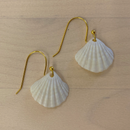Introduction: Laser Cutting a Lamp
Supplies
- Laser Printer (Trotec Speedy 400)
- Rhino (with Grasshopper)
- Illustrator
- Prototyping
- Cardboard for prototyping
- Tape scissors or exacto knife
- sharpie/ felt pen
- Lamp
- Lamp base
- Wood
- Lightbulb
Step 1: Initial Concept
As a group, we brainstormed various lamp designs, patterns, and techniques that inspired our final design. With these images, we assembled a mood board based on our ideas and narrowed down the scope.
Step 2: Paper Prototype
We created a paper prototype of our design using cardboard to figure out the sizes of our leaves, the amount of cuts we would need, and how the pieces would all assemble together.
Step 3: Specking It Out
With the paper prototype measurements figured out, we did some preliminary sketches in illustrator and later realized the measurements needed to be adjusted.
Step 4: 3D Prototype
We took the designs from illustrator and imported them into Rhino to get accurate and consistent measurements of the parts. From here we were able to see some of the assembling issues and design preferences.
Some notes we made were:
- Progressive sizing of leaves
- Make circle on top smaller
- Edit big gaps between the leaves
- Angle of leaves should be more vertical
- option 1: make leaves wider
- option 2: more stems + leaves
Step 5: Back to the Paper Prototype
After finding some corrections needed in the 3D version, we made another paper prototype to perfect the shape and measurements. Then the paper sizes were scanned and traced in illustrator to ensure the exact measurements.
Step 6: Create Leaves in Grasshopper
Moving into Rhino, we created the pattern of the leaves using algorithmic design. The process forms a branching pattern. From here we can change the number of branches, thickness, and length. Due to time constraints, we kept the leaves in the same pattern.
Step 7: Finalizing in Illustrator
To laser cut our desired pattern, we had to transfer the pattern into illustrator. Here, we cleaned up the branches, stems, and overall structure. Ready for print!
Step 8: Send to Laser Cutting
The laser cutting was Trotec Speedy 400. We cut about 55 wooden leaves, and 44 of them were successful.
Step 9: Punch Out Leaves and Assemble
We then punched out the leaves. Some were harder than others because the laser cutter didn't cut all the way through. Then assembled the leaves to the branches and added the base and lightbulb.
Step 10: Final Design
We were super happy with the result!
Below we've listed some takeaways from the project:
- Different patterns for each leaf
- Less space in-between the leaves
- More leaves
- More branches











